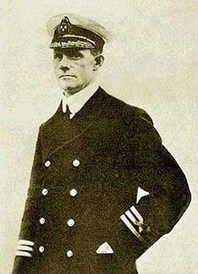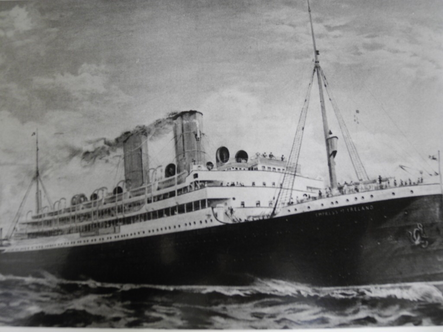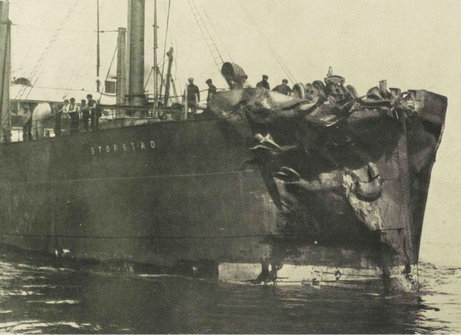The Sinking of
HMS Empress of Ireland
 Henry George Kendall
Henry George Kendall
RMS Empress of Ireland sank in the Saint Lawrence River following a collision with the Norwegian collier SS Storstad in the early hours of 29 May 1914. Of the 1,477 people on board, 1,012 died. Empress of Ireland had just begun her 96th voyage when she sank.
The wreck lies in 40 metres (130 ft) of water, making it accessible to most divers. Many artifacts from the wreckage have been retrieved, some of which are on display in the Empress of Ireland Pavilion at the Site historique maritime de la Pointe-au-Père in Rimouski, Québec.
Empress of Ireland departed Québec City for Liverpool at 16:30 local time on 28 May 1914. Henry George Kendall (pictured) had just been promoted to her captain at the beginning of the month, and it was his first trip down the St. Lawrence River in command of her.
In the early hours of the next morning on 29 May 1914, the ship had reached Pointe-au-Père, Quebec (or Father Point) near the town of Rimouski where the pilot was disembarked. Shortly after resuming her journey, and on a normal outward bound course, the crew sighted the masthead lights of a steamer, which proved to be the Norwegian collier Storstad, on her starboard bow at several miles distant. Likewise, Storstad abreast of Métis Point also sighted Empress's masthead lights. At the time of these first sightings the weather conditions were clear, but very soon the ships were shrouded in the notoriously dangerous fog. Shortly afterwards, at about 02:00 local time, and despite the fog whistles of both ships being repeatedly blown, Storstad crashed into Empress' side.
Storstad did not sink, but Empress – with severe damage to her starboard side – listed rapidly, taking on water. The crew did not have time to shut all of the watertight doors leading water to quickly flood the lower decks. Most of the passengers and crew in the lower decks drowned quickly when water poured through passageways or directly into cabins from the open portholes, some of which were only a few feet above the water line. However, many passengers and crew in the upper deck cabins, awakened by the collision, made it out onto the boat deck and into some of the lifeboats which were being loaded immediately. Within a few minutes of the collision, the ship listed so far on her starboard side that it became impossible to launch the port-side lifeboats. Five lifeboats on the starboard side were successfully launched while a sixth capsized while being lowered. Ten or eleven minutes after the collision, she lurched violently on her starboard side, allowing as many as 700 passengers and crew to crawl out of the portholes and decks onto her side. For a minute or two, the Empress lay on her side, while it seemed to the passengers and crew that the ship had run aground. But a few minutes later, about 14 minutes after the collision, her stern rose briefly out of the water, and the hull sank out of sight, throwing the hundreds of people still on her port side into the near-freezing water. The disaster resulted in the deaths of 1,012 people.

